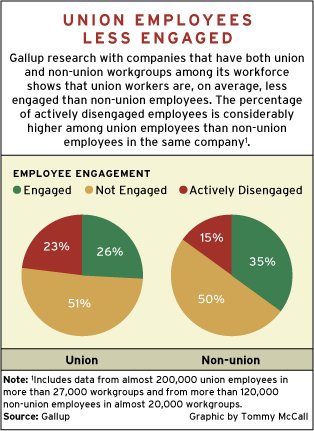When we think about labor unions, a plethora of images may come to mind—strikes, picket lines, and collective-action rallies. Yet, there exists a perplexing inquiry that often goes underexplored: Can managers be part of a union? This question may elicit furrowed brows and inquisitive glances, but it spears into a much deeper narrative woven into the fabric of workplace dynamics. The intersection of managerial authority and union representation raises a host of complexities that warrants a thoughtful dissection.
At the outset, it’s essential to delineate the traditional roles within an organization. Managers occupy a unique echelon—they’re responsible for not only overseeing operations but also for navigating the myriad complexities of employee relations. In many circumstances, this latter responsibility can create a palpable tension. Employees, feeling vulnerable in their positions, often seek collective power through unions, leaving managers to float in a traditional limbo. Yet, why do organizations explicitly delineate that managers should not partake in union activities? What are the underlying implications of such a stance?
When unraveling this query, one must consider the historical context of unions and management. Unions emerged as a counterbalance to the sometimes authoritarian tendencies of management. They were born from the need to safeguard workers’ rights, ensuring fair pay, reasonable working conditions, and job security. As protectors of the workforce, unions have historically viewed management as an adversary—guardians of the worker versus arbiters of the organization’s interests. When managers consider union membership, it can dilute the very essence of this adversarial dynamic, which was intended to foster equity within the workplace.
Many organizations adhere to an unwritten code that excludes managerial employees from union representation to prevent irreconcilable conflicts of interest. Managers negotiate contracts, enforce policies, and make decisions rooted in the organization’s broader agenda. By joining a union, they theoretically amplify the voices of their subordinates but simultaneously compromise their ability to operate in an impartial capacity. This dichotomy inevitably engenders questions about loyalty, accountability, and the role of authority within a workforce.
In exploring the potential for managerial unionism, one cannot ignore the subtext of power and authority. Power often exists in a hierarchy, and when managers occupy the apex, are they not inherently less vulnerable to the complexities of employment than their subordinates? Managers, with their elevated status and control, frequently wield significant influence over the very dynamics that unions endeavor to correct. Thus, their participation in unions might not only be seen as hypocritical but might also threaten the delicate balance of employee relations.
However, as the workplace landscape evolves, so too do the conventions surrounding management and labor relations. There are emergent discussions and movements advocating for a more inclusive approach toward managerial representation. Some argue that as workplaces become more collaborative and egalitarian, the lines separating employees from management shouldn’t be so rigidly defined. This perspective suggests that in certain contexts, including managers in unions could foster a more harmonious and productive work environment. Managers could offer unique insights into organizational policies from an employee’s perspective while championing the ideals of collective bargaining.
The concept of managerial unions is not merely theoretical. There are instances, albeit rare, where managers have successfully banded together to form their own union-like organizations, advocating for their rights and interests. These organizations, however, often find themselves navigating murky waters, battling perceptions and skepticism from both their fellow managers and traditional unions. The inability to firmly establish a universally accepted framework for managerial unionism complicates efforts to legitimize their role in collective bargaining.
Let’s not forget the influence of globalization and technological advancements that have altered traditional labor paradigms. In sectors where jobs are increasingly precarious, the concept of unionization is rapidly evolving. If managers can recognize the value brought forth by unions in advocating for fair treatment, job security, and safe working conditions, they may find motivation to support collective action. This allyship can result in a more cohesive workforce, uniting both employees and managers towards a shared vision of corporate success.
Nevertheless, the friction between individuality and collectivism remains a core challenge. Managers often emerge from diverse backgrounds, bringing with them distinct perspectives shaped by experience. The tension lies in the inherent struggle between these individual motivations and the collective objectives of a union. Can managers find common ground with their subordinates without sacrificing their essence as leaders? This question may resonate in boardrooms and factories alike, provoking ongoing reflection on the complexities of leadership.
In conclusion, the query surrounding the possibility of managers joining unions transcends a mere legality issue. It incites a broader examination of workplace dynamics, power relations, and the evolving nature of professional environments. There’s a budding fascination with potential unionization among managerial personnel that reflects an epoch of transformation in labor relations. As the fabric of organizations changes, so too must our understandings of loyalty, authority, and collective action. Embracing these complexities may ultimately pave the way for a more inclusive and equitable workplace, blurring the rigid boundaries that historically divided workers from their leaders.
